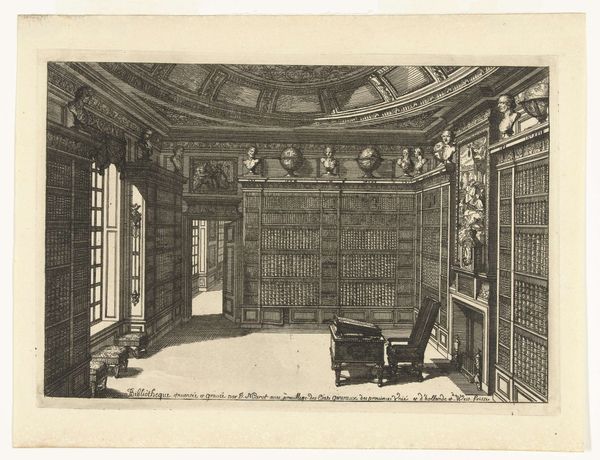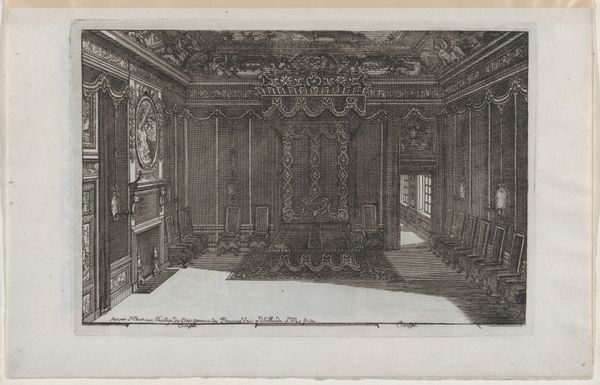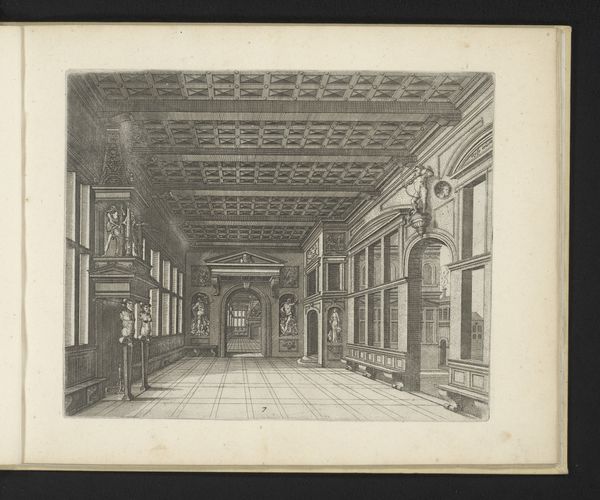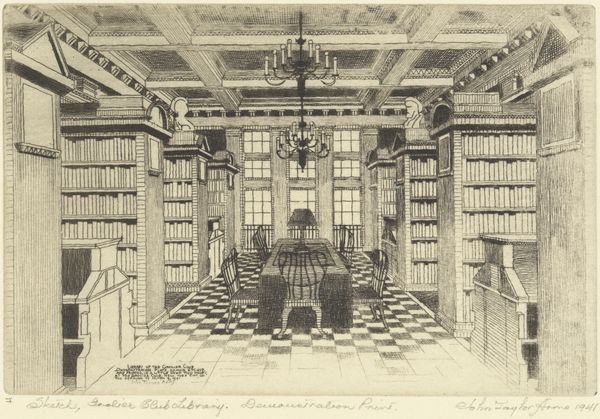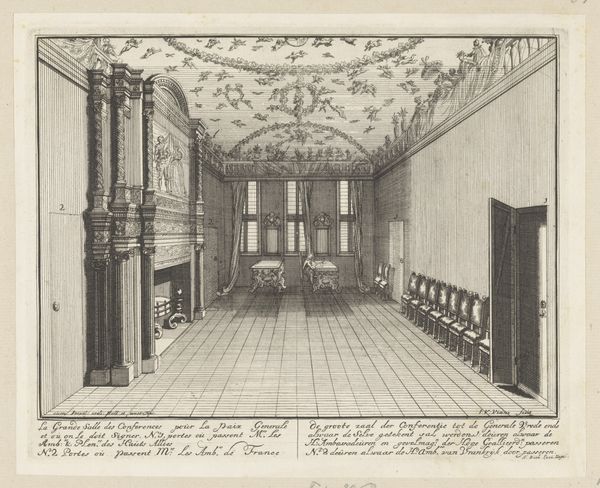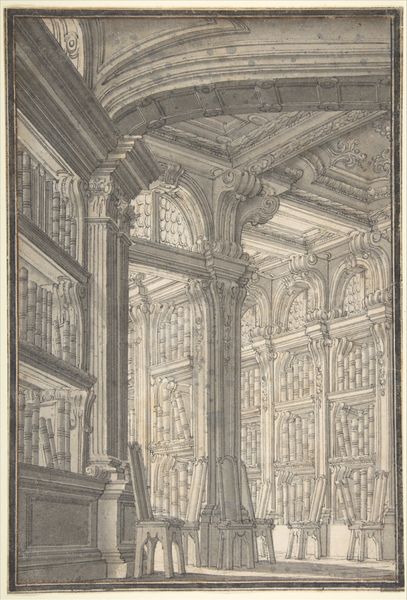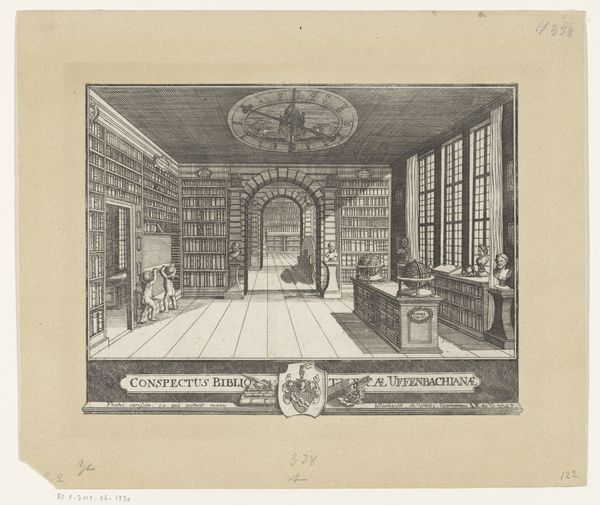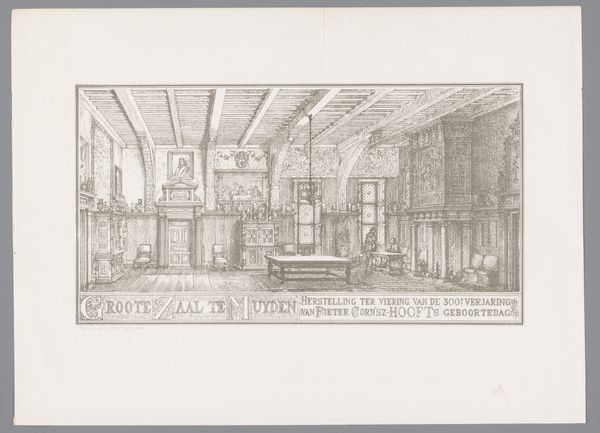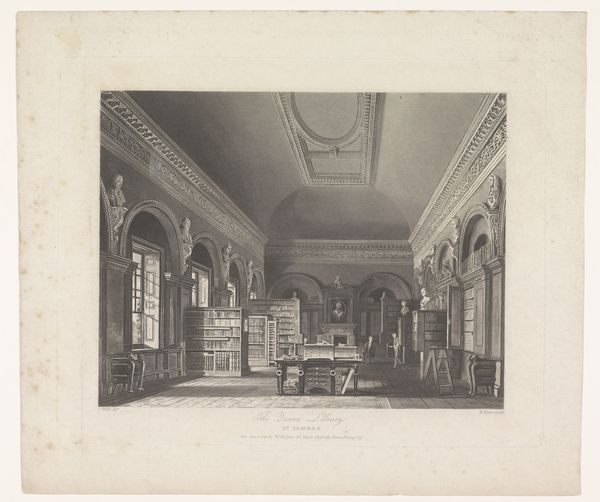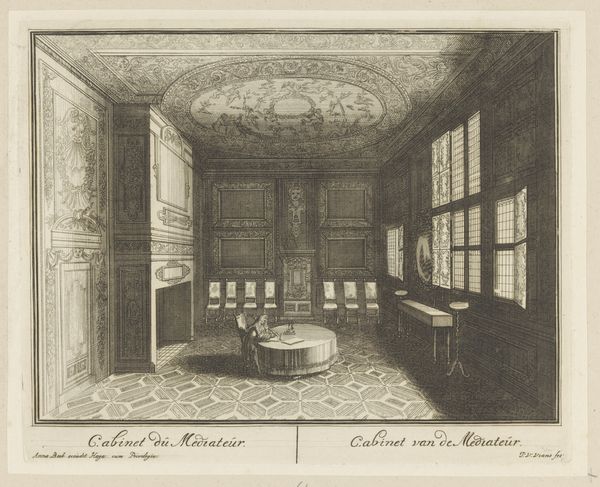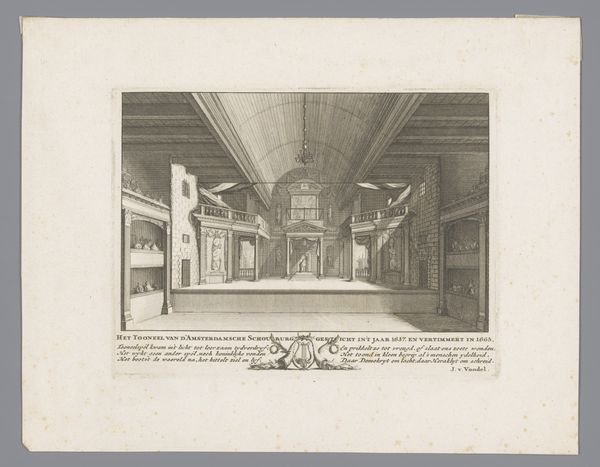
Interior of a Library, from Nouveaux Liure da Partements, part of Œuvres du Sr. D. Marot 1703 - 1713
0:00
0:00
drawing, print, engraving, architecture
#
drawing
#
baroque
# print
#
perspective
#
line
#
cityscape
#
history-painting
#
engraving
#
architecture
Dimensions: Sheet: 8 7/16 × 13 1/2 in. (21.4 × 34.3 cm) Plate: 7 5/16 × 10 3/4 in. (18.6 × 27.3 cm)
Copyright: Public Domain
Curator: Looking at "Interior of a Library" from "Nouveaux Liure da Partements," part of “Oeuvres du Sr. D. Marot,” created between 1703 and 1713 by Daniel Marot the Elder. What springs to mind for you? Editor: A profound sense of intellectual containment. It's a meticulously rendered space, yet the sheer volume of books, those countless spines, presses in. It speaks of knowledge as a constructed, almost oppressive force. Curator: That's fascinating. The artist used engraving to create the illusion of depth, crafting a kind of architectural fantasy, designed more as aspirational prospect than a truly habitable area. The crisp lines articulate the baroque details of paneling, busts, and of course, those serried ranks of books. Editor: For me, it raises questions about access and patronage. Who commissioned this? Who was meant to inhabit—or perhaps merely aspire to—this idealized space of learning? Were these commissions reflective of actual library builds? It seems tailored to showcase the wealth and erudition of an elite. Curator: Certainly. Prints like this disseminated architectural trends and shaped elite taste. Daniel Marot was hugely influential in his day and his influence as designer of furniture, interiors, and gardens extended across Europe; this type of image demonstrates how these designs were disseminated and re-imagined. The act of representing it through engraving removes the immediacy of handcrafted materials and re-presents the ideas for mass distribution. Editor: So the material reality gives way to the ideal. How fascinating that the means of production – the very print itself – is complicit in distancing us from the embodied experience of the room. A print designed to represent the tangible in a intangible way. Curator: Precisely. The choice of engraving as a medium, allows Marot to control its production and tailor distribution—the library is both a real space and a social construct, accessible only to those within particular circles of influence and affluence. Editor: Reflecting on its modern-day display, this print in its current museum setting allows it to now be admired outside the immediate confines of class, wealth, and original socio-economic position. Curator: Indeed, our modern, public access shifts its role again! The lifecycle of art and material continues its transformative arc.
Comments
No comments
Be the first to comment and join the conversation on the ultimate creative platform.
